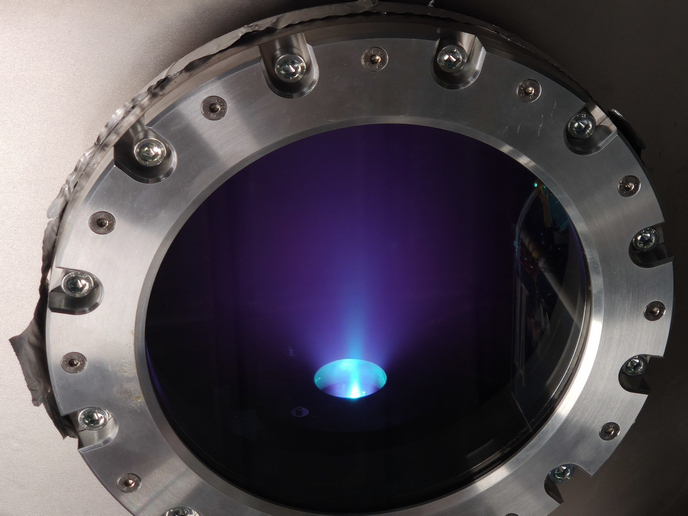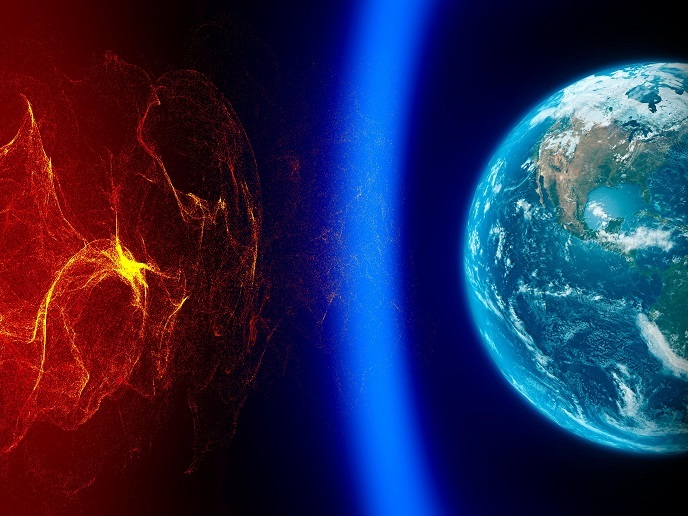Advanced helicon plasma thruster propulsion moves closer to market
There are currently more than 5 000 satellites orbiting the Earth at a relatively close distance. These low Earth orbit (LEO) satellites are very useful for Earth observation, serving purposes from climate monitoring to telecommunication and defence, while demand is growing rapidly. Mass production of hundreds of LEO satellites for mega-constellations will place stricter requirements on manufacturing time and cost, as well as on operating cost and lifetimes. Disruptive helicon plasma thruster (HPT) technology – an advanced type of electric propulsion (EP) under development – could meet these requirements. The EU-funded HIPATIA(opens in new window) project has advanced HPT technology and delivered a complete propulsion system, moving the promising thruster closer to market and to space.
Electric propulsion without electrodes and complex electronics
All propulsion systems rely on Newton’s third law of motion: ejecting something in one direction to move in the opposite direction. Conventional chemical propulsion relies on combustion. The ejected exhaust jet moves the satellite, but this requires significant propellant, meaning not only weight, but increased risk as the propellant is highly flammable. Newer electric EP systems use much less propellant but face other challenges. Electrostatic thrusters currently ionise noble gases via electrostatic discharge. Ejection of the ionised particles produces thrust, but ionisation requires electrodes that are difficult to manufacture and operate, as well as complex electronics to produce high voltages. “Helicon plasma thruster technology ionises the propellant to produce hot plasma using an electromagnetic radiofrequency field created by an antenna and magnets. Gone are the electrodes and complex electronics, simplifying the system and enabling(opens in new window) a longer lifetime while making it easier to produce, and cheaper and faster to integrate,” explains project coordinator Mercedes Ruiz of Sener(opens in new window).
Advances and new developments enable integration and testing
HIPATIA started with an HPT developed to an intermediate technology readiness level (TRL). The rest of the components of the propulsion system – critical to its functionality – had not been considered. A combined modelling and test campaign enabled the consortium to advance the TRL of the helicon plasma thruster and develop and integrate critical components. The propellant control unit controls propellant pressure and mass flow. The radiofrequency generation and power unit ionises the propellant and accelerates the plasma to leave the thruster at high velocities. “HIPATIA led to two successful coupling test campaigns of the complete helicon plasma thruster propulsion system, bringing it much closer to market application,” says Ruiz.
Propelled to market, accelerating innovation and new missions
“I am very proud of the HIPATIA Team: Sener, UC3M, Airbus Defence and Space, CNRS and Advanced Space Technologies. Despite starting the project during the COVID-19 pandemic, we worked together very well to move forward and fulfil the project’s objectives,” notes Ruiz. Not only did they advance the TRL and system integration level significantly but, “the advanced modelling, simulation and testing deepened understanding of the physics behind this type of plasma device. It has led to new routes to increase efficiency that are the basis of a new thruster design we are currently characterising,” says Ruiz. HIPATIA’s developments bring radiofrequency thrusters closer to market. They will provide the aerospace industry with simpler and more versatile EP systems, potentially paving the way to new missions.







